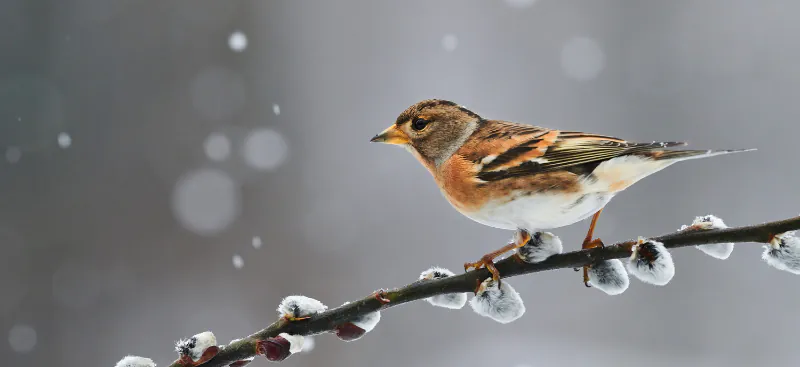Top 10 Birds to Spot in Your Garden This Winter
As we delve deeper into winter, your gardens may get more frequent visits from old faces and new arrival of wild birds. They will be desperately searching for calorie-rich foods to keep warm, and with natural food resources low, they will be flocking to our bird feeders instead. Here are the top 10 birds you can spot in the garden this winter and foods that will entice them to visit again.
1. Robin (Erithacus Rubecula)
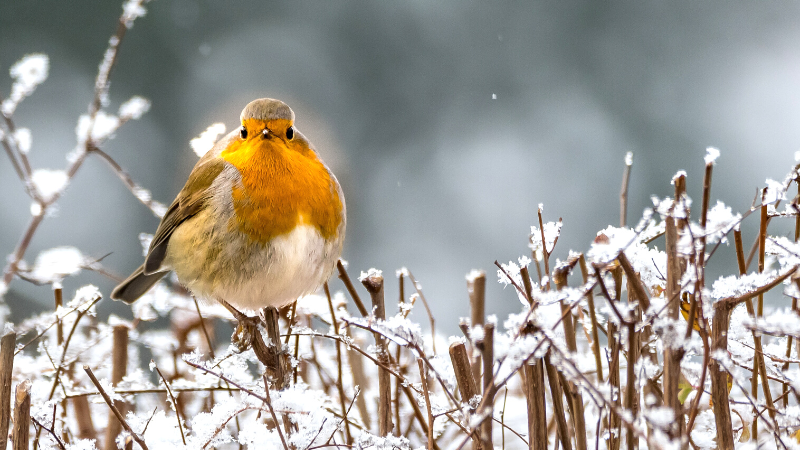
With Christmas just around the corner, we must put the lovely robin at the top of our list of winter garden birds. They are one of the most popular and familiar birds in the UK, and they regularly visit gardens. Unmistakable to spot with their brown back, white belly, and famous red breast. Quite the handsome bird!
They are very territorial and make their presence known with a loud song. They sing all through the winter when both males and females hold territories. These feisty little birds will hold their ground and even fight to drive off intruders.
Many believe that the robin is the spirit of a loved one that has passed and therefore gives comfort to those that spot them.
Small worms, insects, insect larvae and spiders make up most of their diet, but they also enjoy sunflower hearts, suet pellets, fruits, and berries in the winter months.
2. Brambling (Fringilla montifringilla)
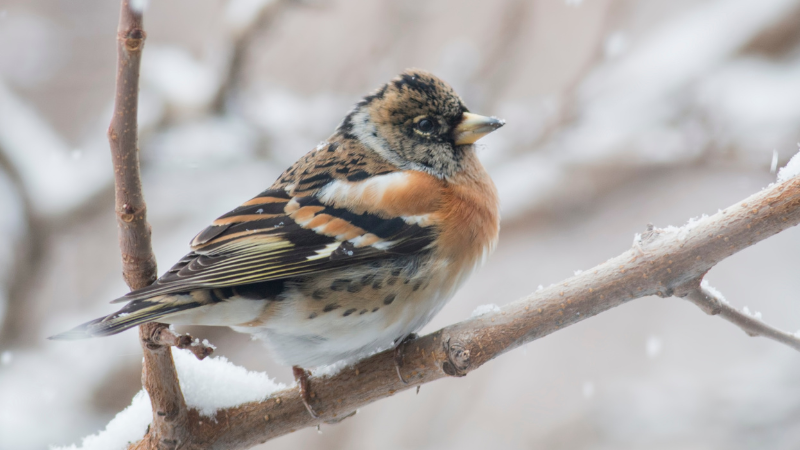
Each year in winter, Bramblings fly south to the UK in an attempt to escape the freezing Scandinavian snow. Males have bright orange and white breasts and a mottled grey-brown head. Female Bramblings have similar colours to males but are slightly less vibrant.
It's easy to confuse this bird with its cousin, the Chaffinch. Both share similar plumage colouring and travel in the same flocks. On average, Bramblings are slightly bigger and have a white rump which Chaffinches do not.
During their stay in the UK, Bramblings will feast on peanuts, seeds and berries. When the weather turns warm in spring, and before they make their long journey back north, Bramblings will look for protein-rich foods such as live mealworms and waxworms.
3. Blue Tit (Cyanistes caeruleus)
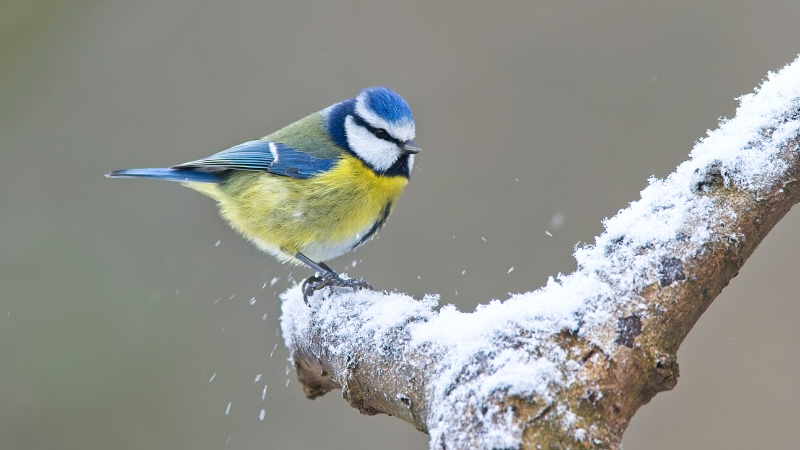
The blue tit is often found in woodland, parks, and gardens. It nests in tree holes but will also be happy to try out a nest box.
This lovely little bird is very colourful with a blue cap, white cheeks, black eye stripes, a green/blue back, yellow belly and blue wings and tail.
Like most birds, blue tits see in ultraviolet (UV) light. Studies have shown that the brown cap on their heads glows slightly brighter under UV light. This is thought to give out signals for mating purposes.
Blue tits are active feeders and will hunt out insects and spiders from the woodland area. In the garden, they like to feed on peanuts, sunflower hearts, and suet pellets.
4. Bullfinch (Pyrrhula pyrrhula)
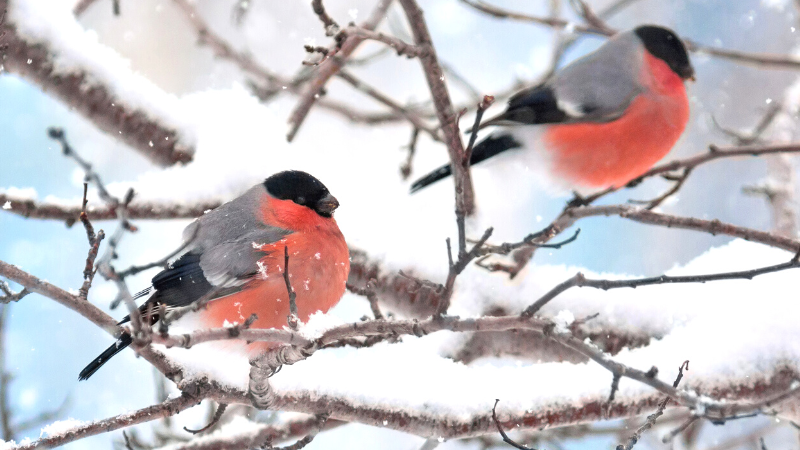
Bullfinches are a rare gem to have in the garden. Known for their vibrant red plumage and melancholy song, Bullfinches are quite secretive during the spring and summer months. They nest deep within thick undergrowth and feed on berries in woodlands.
But come autumn and winter, their natural resources dwindle, and they need to expand their horizons and dietary preferences. During the colder months, you will be much more likely to spot Bullfinches in your garden, especially if you have feeders full of sunflower hearts and other bird seeds.
5. Goldfinch (Carduelis Carduelis)

The goldfinch is found everywhere, from gardens and parks to woodland heathland and farmland. They like to nest on the end of branches or buried within a hedgerow.
This small colourful bird can be identified by its brown back, white belly, black and yellow wings, white cheeks, and bright red face. Very striking!
During the winter, goldfinches roam in flocks of up to 200 birds, searching for food. Some of our UK birds will avoid the cold winter and opt for the sunnier climate of Spain.
Goldfinches eat mostly seeds and insects and in the garden, are partial to sunflower hearts and a niger seed or two!
6. Long-Tailed Tit (Aegithalos caudatus)
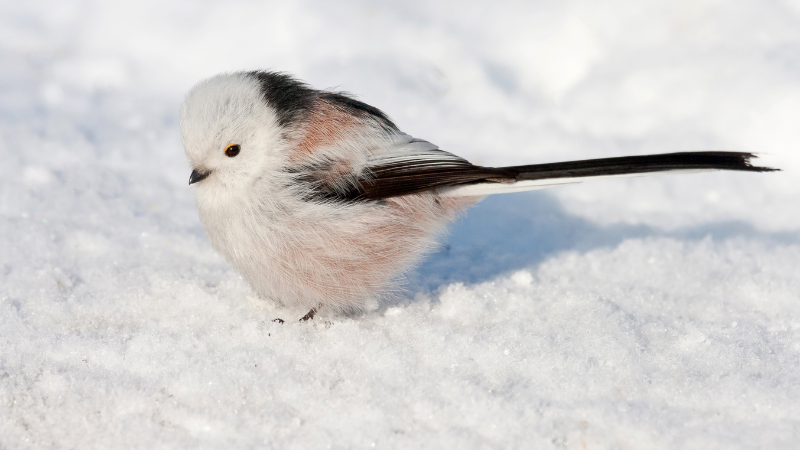
The Long-Tailed Tit can be found in woodland, hedgerows, parks, and scrubland. They will make their nest out of spiders’ webs, moss, lichen, and grass and will be lined with feathers or hair. These nests can be found in hedges, trees, and bushes.
The Long-Tailed Tit has a tail longer than its body. It has a distinct small stature with pinkish streaks on its shoulders and belly. It has black and white wings and a tail with a white chin. It also has a reddish/orange eyelid.
These little birds usually roam in flocks of around twenty, and there is generally no fear of eating around humans. They are a common bird to spot in the garden and open scrubland.
Long Tailed Tits eat mostly berries, nuts and insects and, in the garden, will enjoy feeding on peanuts and suet pellets.
7. Coal Tit (Periparus Ater)
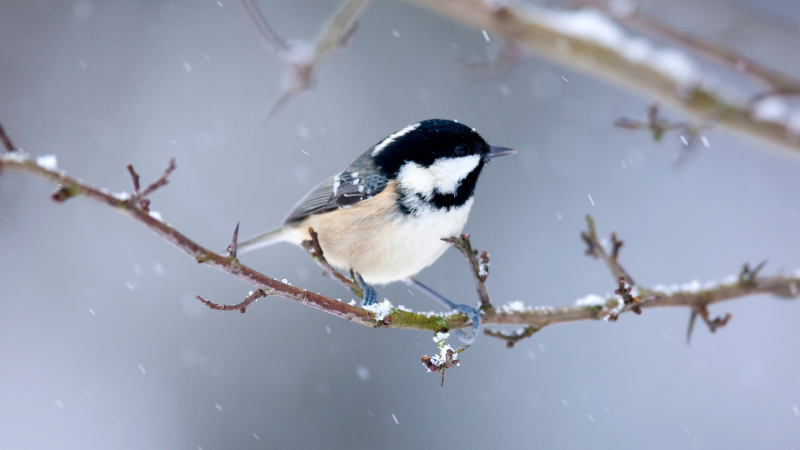
Coal Tits the smallest of all the Tits, can be found in parks, gardens, and coniferous woodland. They nest in small holes such as those found in trees and have been known to move into mouse holes.
Coal Tits are identified by their grey backs, white cheeks, black cap, and white neck patch. Very similar to the marsh tit and willow tit, but the Coal Tit has white wing stripes and a white patch at the back of its head. The Marsh and Willow Tits have plain black wings and entirely black caps.
In winter, they form flocks with other tits, roaming woodlands and gardens.
Coal Tits are active feeders and will hunt out insects and spiders from the woodland area. In the garden, they like to feed on peanuts, sunflower hearts, and suet pellets.
8. Nuthatch (Sitta Europaea)
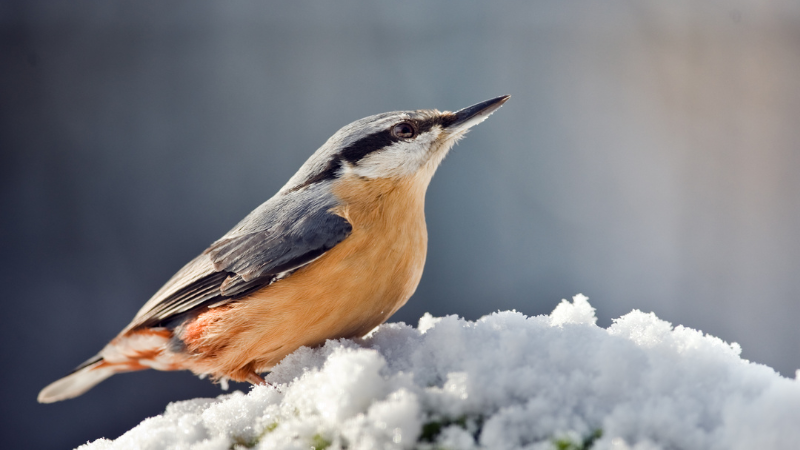
The Nuthatch can be easily spotted climbing headfirst down tree trunks in woodland and parks. They nest in holes in trees or abandoned nests but are also happy to use nest boxes. They use a combination of bark chips and dead leaves to line the nest. They will plaster mud around the entrance hold of their nest to meet their exact requirements.
Nuthatches’ are identified by their blueish-grey backs, brown-orange belly, white chin, black eye stripe and black cap.
In winter, Nuthatches feed on insects, invertebrates, seeds, and nuts. They will hide surplus nuts in gaps in the tree bark to eat later. They have a habit of hacking at these nuts to retrieve them from their hiding place, and this is thought to have earned these birds their name. In the garden, they like to feed on peanuts, sunflower hearts, and black sunflower seeds.
9. Chaffinch (Fringilla Coelebs)
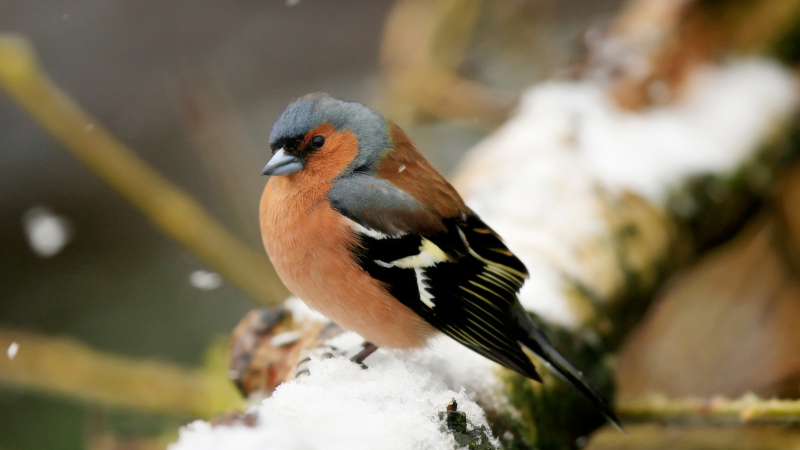
The Chaffinch is found all throughout the UK and is commonly found in woodland areas. It can also be found on farmland and in parks and gardens.
Chaffinch nests are constructed using spiders’ webs, moss, grass and lined with feathers. Nests can be found in trees, hedges, and bushes.
Male Chaffinches are very colourful birds with an orange-pink breast and cheeks, blue-grey cap, and orange-brown back. Females are much duller brown with hints of green and yellow.
Chaffinches forage for food both on the ground and in trees. In the warmer months, their diet consists of invertebrates, with caterpillars being their favourite! Towards the end of the year, their preference changes to that of a more seed-based diet.
10. Bohemian Waxwing (Bombycilla garrulus)
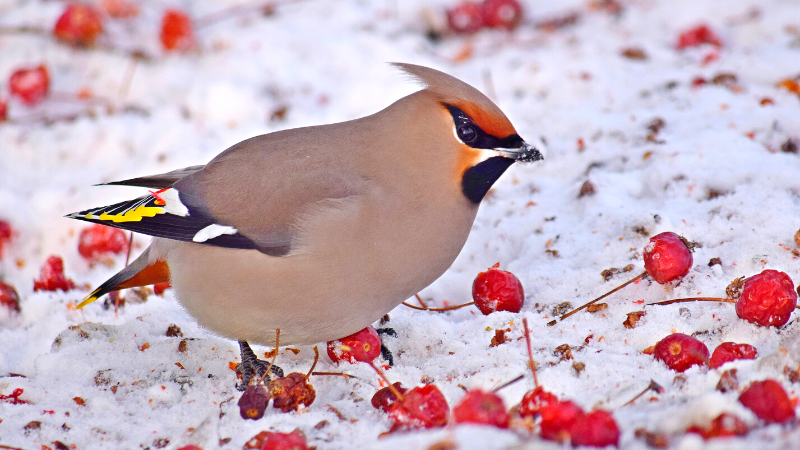
Last but certainly not least of our top 10 winter garden birds is another magnificent winter visitor, the Bohemian Waxwing. This bird is certainly a wonderous sight with its silky, grey-pink plumage and fabulous crest. It gets its name from the red flecks that are said to resemble dripping wax, and a tuft of feathers jutting out of its crown.
The Waxwing's diet mainly consists of berries, particularly rowan, rosehips, and hawthorn. Even though you'll only have a good chance of seeing this bird in your garden if there's a berry tree in it, we still think Waxwings should be on everyone's watch list this winter- they're just so magnificent! Why not check out your local RSPB reserve and see if they've had any visits from Waxwings? You may even see other species of birds that you haven’t seen before.

